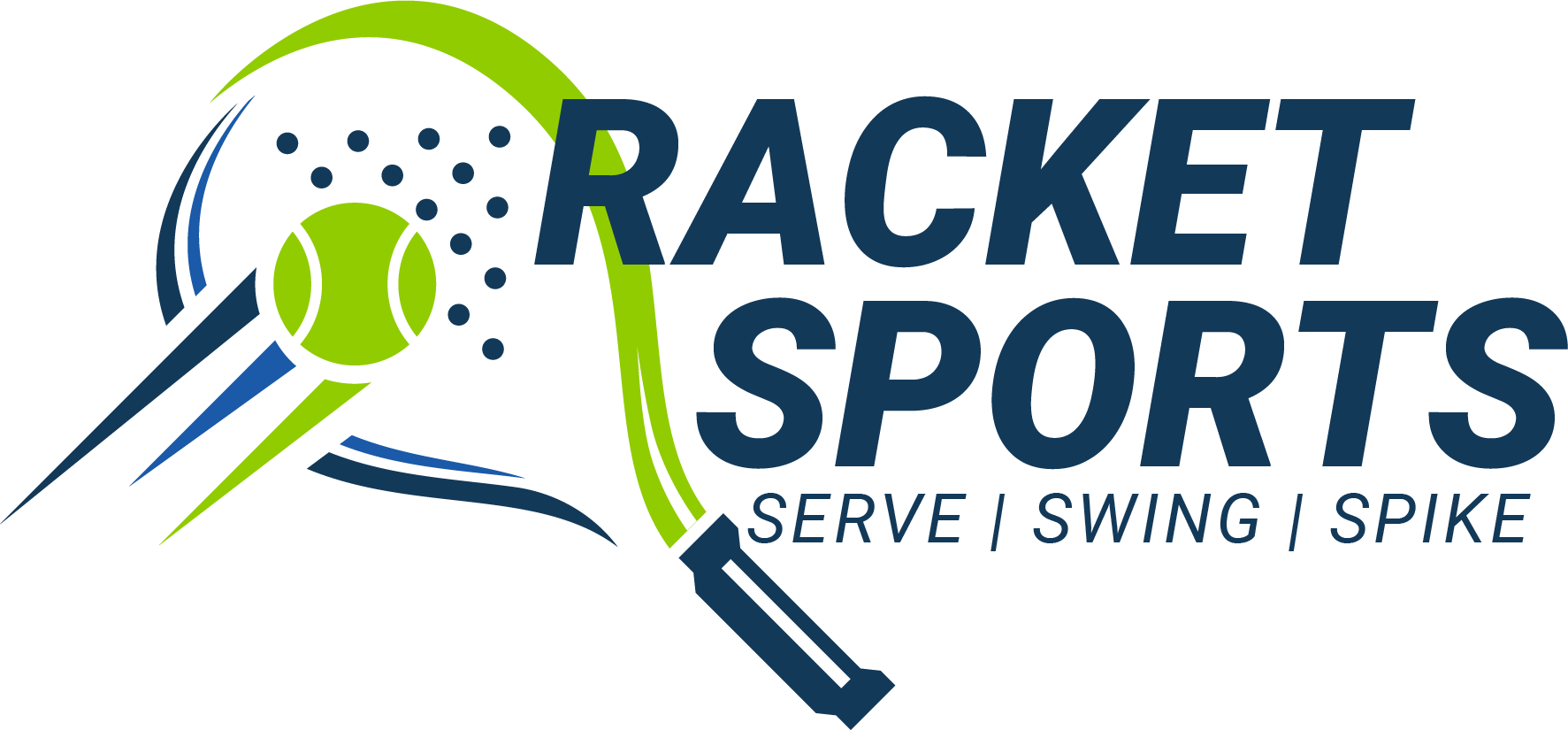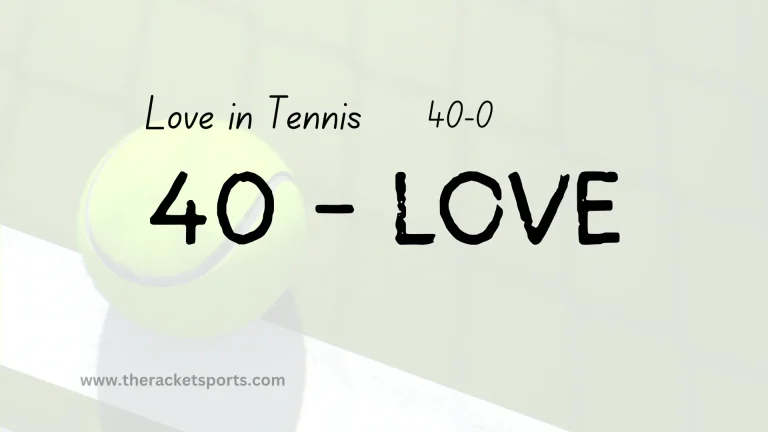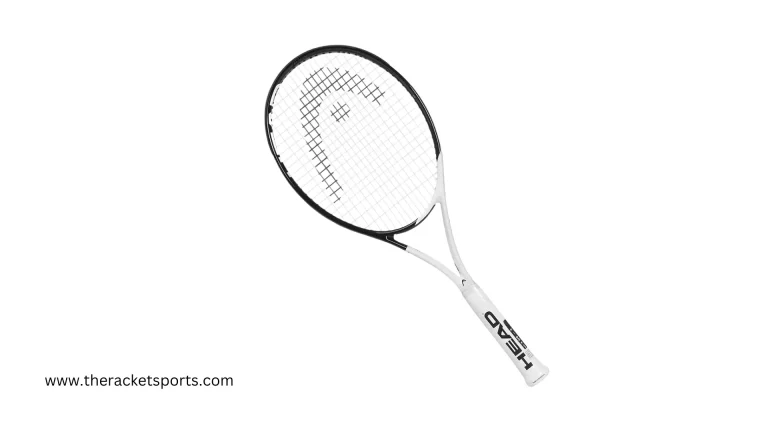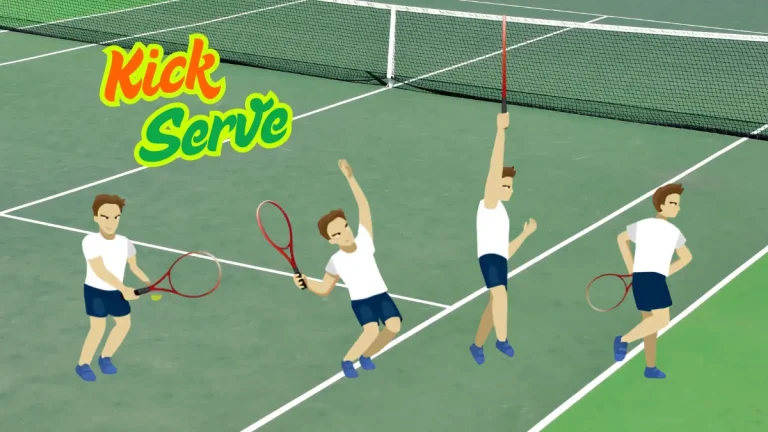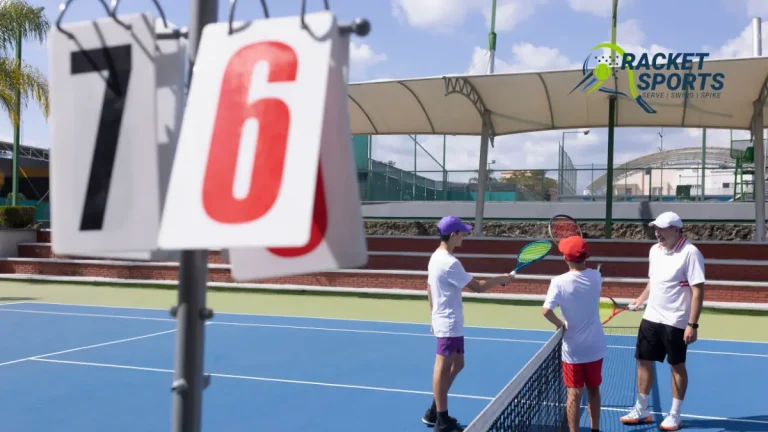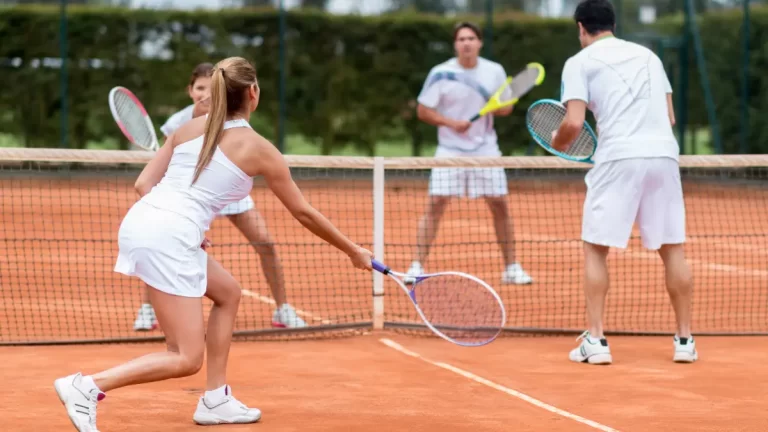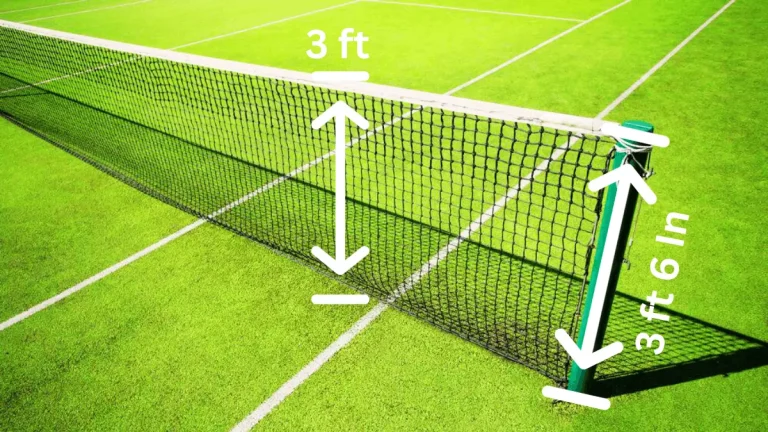Types of Tennis Shots | Complete Easy Guide 2025
Tennis is a sport of precision, strategy, and skill. To excel, players must master various tennis shots, each designed for different game situations. Whether you’re a beginner or an advanced player, understanding the name of tennis shots and their applications can elevate your game. In this guide, we break down the fundamental Tennis shots, their techniques, and when to use them effectively.
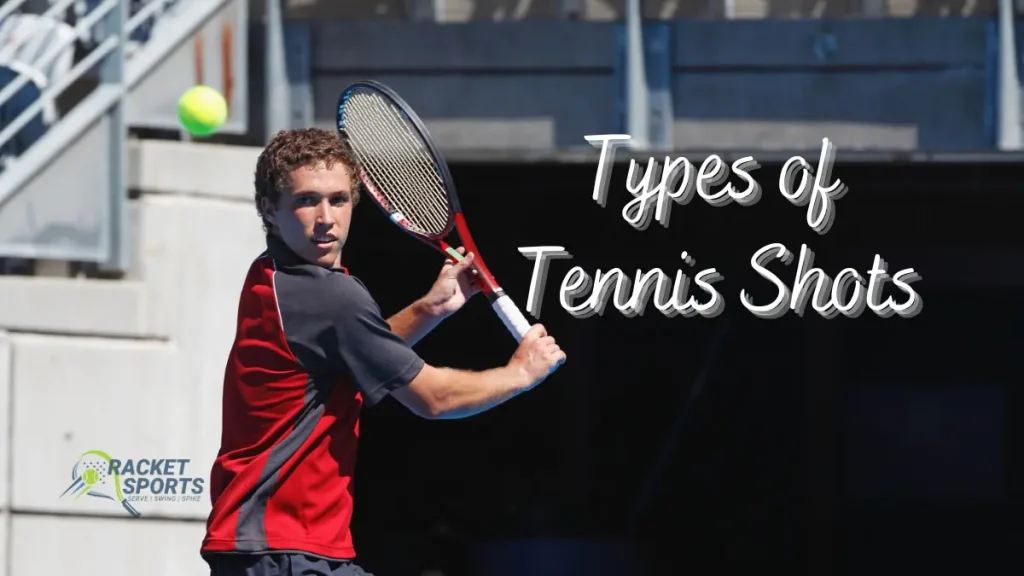
Types of Tennis Shots and Their Strategies
Lets discuss the Major Best Tennis Shots and their strategies to master them.
Groundstrokes
1. Flat Groundstroke
A flat groundstroke is a powerful shot with minimal spin, allowing for maximum speed and depth. This shot is ideal for aggressive baseline play and can be used to hit winners or put pressure on opponents by forcing them to react quickly. It is most effective on fast surfaces like hard courts where the ball stays low and moves swiftly.
Strategy:
Flat groundstrokes are powerful but require precision. To master this shot:
- Focus on your follow-through: After hitting the ball, ensure that your follow-through is long and controlled. This helps maintain accuracy and power.
- Timing is key: Try to make contact with the ball when it’s just below waist height for maximum power and precision.
- Use your whole body: Engage your core and legs to generate power. Avoid relying solely on your arms.
2. Topspin Groundstroke
The topspin groundstroke is one of the most commonly used shots in modern tennis. It generates forward rotation on the ball, causing it to dip over the net and bounce higher upon landing. This shot is ideal for consistent baseline play, helping players maintain control in rallies while making it difficult for opponents to attack aggressively.
Strategy:
Topspin shots are essential for consistency and control. Here’s how to master them:
- Swing low to high: To generate topspin, you need to hit the ball with an upward swing. This helps the ball dip into the court after bouncing.
- Practice depth: Focus on hitting deep balls that push your opponent to the back of the court.
- Work on your grip: A semi-western or western grip is ideal for topspin shots, allowing for easier spin generation.
3. Slice Groundstroke
A slice groundstroke is a defensive shot that adds backspin to the ball, making it stay low and travel slower through the air. This shot is useful for disrupting an opponent’s rhythm, forcing them to adjust their timing. It is particularly effective on grass courts, where the low bounce makes it harder to return.
Strategy:
The slice shot is great for creating low, skidding balls that are hard to attack. To master it:
- Keep a compact swing: Use a short, controlled swing with a continental grip for a clean slice.
- Use your body rotation: Rotate your upper body to create more backspin, and practice hitting the ball with a slightly open racket face.
- Use it defensively: Slice groundstrokes are ideal when you’re out of position or trying to slow down the rally.
4. Inside-Out Groundstroke
An inside-out groundstroke is hit crosscourt with an open stance, typically using a forehand. It is commonly used to target an opponent’s weaker side and create an opportunity for an aggressive follow-up shot. This shot works well when players position themselves to dictate play and control the direction of the rally.
5. Inside-In Groundstroke
The inside-in groundstroke is a variation of the inside-out shot but is hit down the line instead of crosscourt. It is often used to catch an opponent off guard, as many players anticipate a crosscourt shot. This shot requires excellent footwork and precise timing to execute successfully.
Essential Equipment for Practicing Groundstroke
- HEAD Ti.S6 Tennis Racquet: Known for its lightweight design and large head size, this racket offers a blend of power and control, making it suitable for players focusing on groundstrokes.
- Tennis Rebounder Net: A rebounder net allows players to practice forehand and backhand groundstrokes by simulating real ball returns. The Ksports Tennis Rebounder Net is a versatile option suitable for various racquet sports, offering quick assembly and portability.
Read About More Shots: Master the Tennis Banana Shot Like Nadal | Pro Tips 2025
Volleys
1. Forehand Volley
A forehand volley is played near the net with an open racket face, allowing the player to block or punch the ball back with minimal backswing. It is used to take control of the net and finish points quickly. The key to a successful forehand volley is maintaining a firm wrist and keeping the shot compact.
Strategy for Forehand Volleys
Forehand volleys require quick reflexes and precision. To excel:
- Stay low and balanced: Keep your knees slightly bent and stay on the balls of your feet to react quickly.
- Shorten your backswing: A compact swing will help you hit the ball more cleanly and with control.
- Use the “punch” technique: Think of the volley as a punch with your racket. You don’t want to swing, but instead, redirect the ball with firm contact.
2. Backhand Volley
The backhand volley is similar to the forehand volley but requires more wrist stability and control. Since most players find the backhand side less natural, this shot requires extra focus on technique. A strong backhand volley is essential for countering aggressive net approaches and executing clean winners.
Strategy for Backhand Volleys
Backhand volleys are often trickier but can be mastered with practice:
- Keep your racket face steady: Ensure the racket face is slightly open, and focus on controlling the ball with a firm wrist.
- Use your non-dominant hand: The non-dominant hand plays an essential role in stabilizing the racket. Focus on a relaxed grip and smooth follow-through.
- Focus on positioning: Your positioning near the net will determine your ability to execute effective backhand volleys.
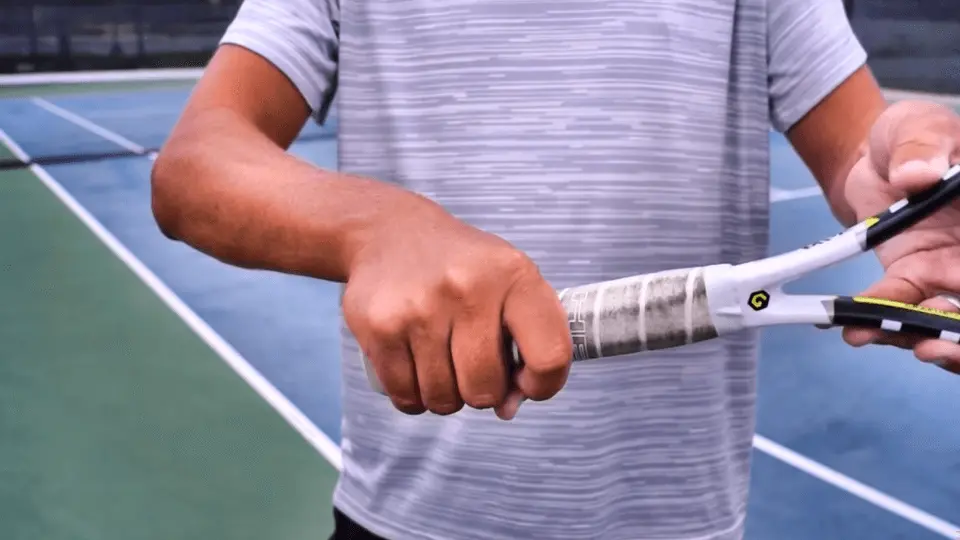
3. Half Volley
A half volley is a challenging shot that is hit immediately after the ball bounces. It is often used in defensive situations when a player does not have enough time to prepare for a full volley. The key to a successful half volley is absorbing the ball’s pace and redirecting it with a controlled stroke.
Essential Equipment for Practicing Volleys
- Wilson H6 103 Pre-Strung Recreational Tennis Racquet: With a midsized head for enhanced feel and control, this racket’s graphite composition provides a mix of control, feel, and power, ideal for precise volley shots.
- Tennis Rebounder Wall: To enhance volley techniques, a rebounder wall provides immediate ball return, helping improve reaction time and precision. The Foilswirl Tennis Rebounder Net is designed for such practice, offering a sturdy frame and easy setup.
Serves
1. Flat Serve
The flat serve is one of the fastest serves in tennis, traveling with little to no spin. It is often used as a first serve to win free points or force weak returns. Players aiming for an effective flat serve must focus on generating power while maintaining precision to avoid faults.
Strategy for Flat Serve
A flat serve is fast but requires high accuracy. To master it:
- Perfect your toss: A consistent toss is key for hitting a powerful flat serve. Toss the ball in front of your body and slightly to the right (for right-handed players).
- Focus on your core rotation: Use your legs, hips, and torso to generate power and speed.
- Aim for the corners: Aim for the service box’s corners to make it harder for your opponent to return the serve.
2. Kick Serve
A kick serve generates heavy topspin, causing the ball to bounce high after landing. This type of serve is commonly used as a second serve, as the high bounce makes it difficult for opponents to attack. It is especially effective on clay courts, where the surface enhances the ball’s spin.
Strategy for Kick Serve
The kick serve is great for creating high bounces. Here’s how to execute it:
- Brush up on the ball: Focus on brushing the ball from low to high to generate topspin and create that high kick.
- Toss higher: A higher toss allows the ball to spin and kick more effectively.
- Practice placement: Aim for the wide angles or body to keep your opponent guessing and off-balance.
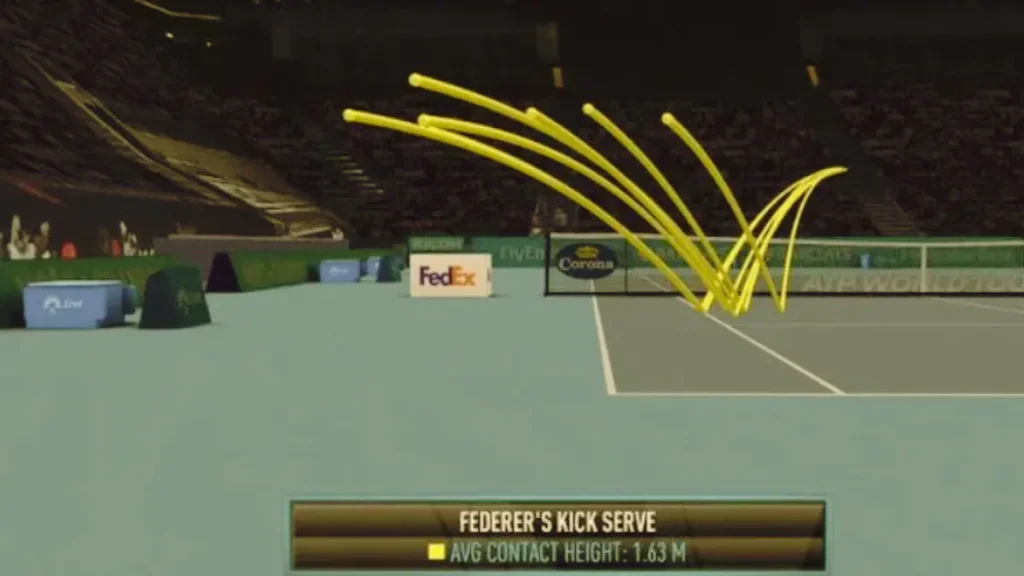
3. Slice Serve
A slice serve curves sideways due to sidespin, making it an excellent tool for pulling opponents out wide. This serve is useful for opening up the court and setting up an aggressive follow-up shot. Players often use the slice serve on both first and second serves to create angles and disrupt an opponent’s positioning.
Strategy for Slice Serve
A slice serve is effective at pulling your opponent wide off the court. To master it:
- Use sidespin: Brush the ball on the side with a continental grip to create a curving motion.
- Focus on the body: Start with a body serve and then mix in wide serves to keep your opponent moving.
- Serve with variety: Practice both wide and body slice serves to keep your opponent off balance.
Essential Equipment for Practicing Serve Shots
- WILSON Tour Slam Adult Recreational Tennis Racket: Featuring an oversized head for a larger sweet spot and an open string pattern for added power and spin, this racket aids in delivering powerful serves.
- Tennis Ball Machine: Consistent serve practice is crucial. The PT-Smart Tennis Ball Machine offers customizable drills and remote control, allowing players to simulate various serve scenarios effectively.
Return
A strong return is crucial for countering an opponent’s serve. The key to an effective return is early anticipation and quick footwork. Players should aim to return serves deep and wide to limit the server’s options. Using topspin or slice on returns can also help neutralize powerful serves and regain control of the point.
Strategy for Return of Serve
The return is often underestimated, but it’s crucial for putting pressure on your opponent. To master the return:
- Anticipate the serve: Read your opponent’s body language and toss to predict the type of serve.
- Stay on the balls of your feet: Be prepared to react quickly to fast serves, adjusting your position as needed.
- Take the ball early: By stepping in and intercepting the ball before it bounces, you reduce your opponent’s time to react.
Specialty Shots
Approach Shot
An approach shot is hit with the intention of moving forward to the net. It is often played with topspin or slice to keep the ball low, making it harder for an opponent to pass. A well-executed approach shot sets up an easy volley or overhead smash.
Strategy for Approach Shot
An approach shot is key to getting to the net. To perfect it:
- Choose the right shot: Use a topspin groundstroke to keep the ball deep and push your opponent behind the baseline.
- Move quickly: After hitting the approach shot, immediately follow it to the net, maintaining your aggressive position.
Passing Shot
A passing shot is designed to counter an opponent’s net play. This shot is hit with precision and speed to pass the opponent before they can react. It is most effective when executed with topspin, allowing the ball to dip quickly over the net.
Strategy for Passing Shot
Passing shots are your weapon when your opponent approaches the net. To master it:
- Stay composed: Focus on staying calm under pressure and aim for the open court.
- Use angle and disguise: Hitting sharp angles or faking one direction and passing the other way can be highly effective.
Lob Shot
A lob shot is a high-arcing shot played over an opponent’s head, often used to counter aggressive net approaches. A well-placed lob can force an opponent into a difficult defensive position or set up the opportunity for an easy winner.
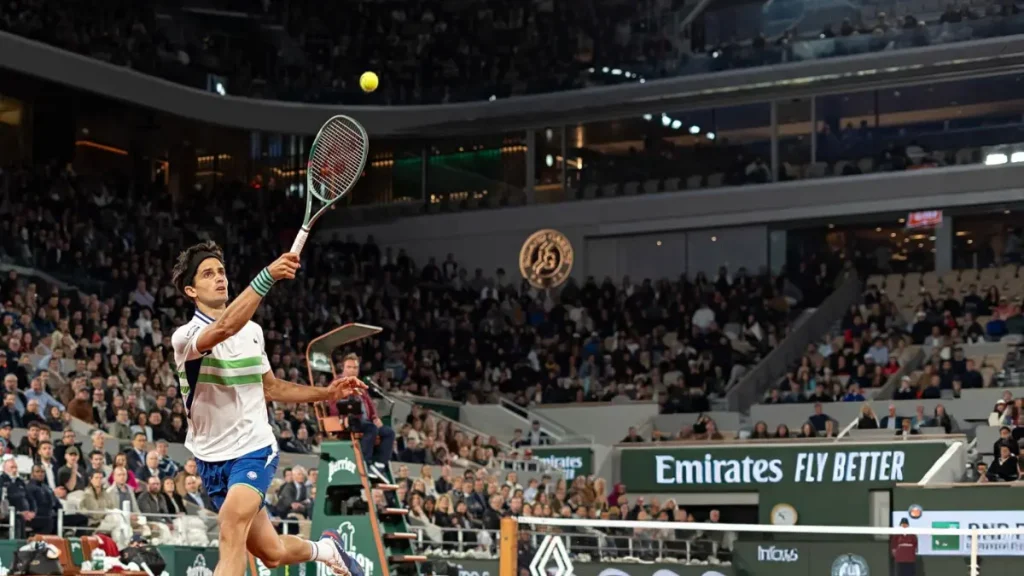
Strategy for Lob Shot
The lob is an essential shot when your opponent is at the net. Here’s how to perfect it:
- Focus on height and depth: Aim to clear your opponent’s head while keeping the ball deep in the court.
- Use topspin: Adding topspin will help the ball dip quickly, preventing it from going long.
Overhead Shot
An overhead shot, or smash, is a powerful shot used to finish points. It requires good positioning and timing to generate maximum power. The overhead shot is most effective when an opponent hits a weak lob, allowing the player to attack aggressively.
Drop Shot
A drop shot is a soft, delicate shot that barely clears the net. It is an excellent way to catch an opponent off guard, especially when they are positioned deep behind the baseline. The key to a successful drop shot is subtle touch and disguise.
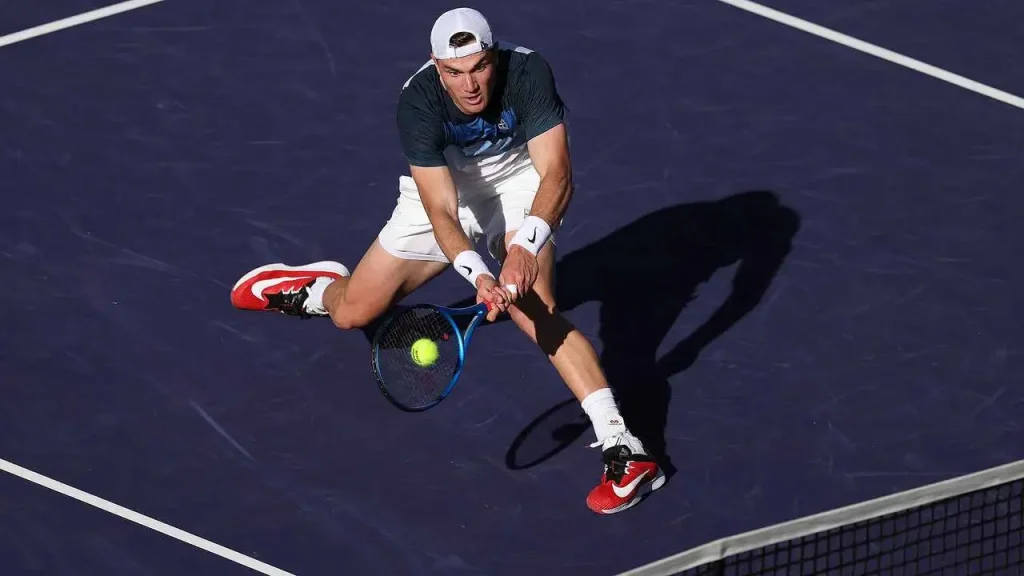
Strategy for Drop Shot
The drop shot is all about finesse. To master it:
- Use the right racket grip: A soft grip will allow you to impart just the right amount of spin for a delicate shot.
- Disguise your intentions: Practice disguising your drop shots so your opponent doesn’t anticipate it.
Chip and Charge Shot
The chip and charge is a strategy where a player slices the return and immediately moves toward the net. This shot is effective for putting pressure on opponents and taking control of the point early in a rally.
Putaway Shot
A putaway shot is hit with the intention of ending the point immediately. This shot is usually played with full power and precision to ensure the opponent has no chance of returning it.
Winner
A winner is a shot that lands inbounds and is unreturnable. The ultimate goal in tennis is to hit winners consistently while minimizing errors.
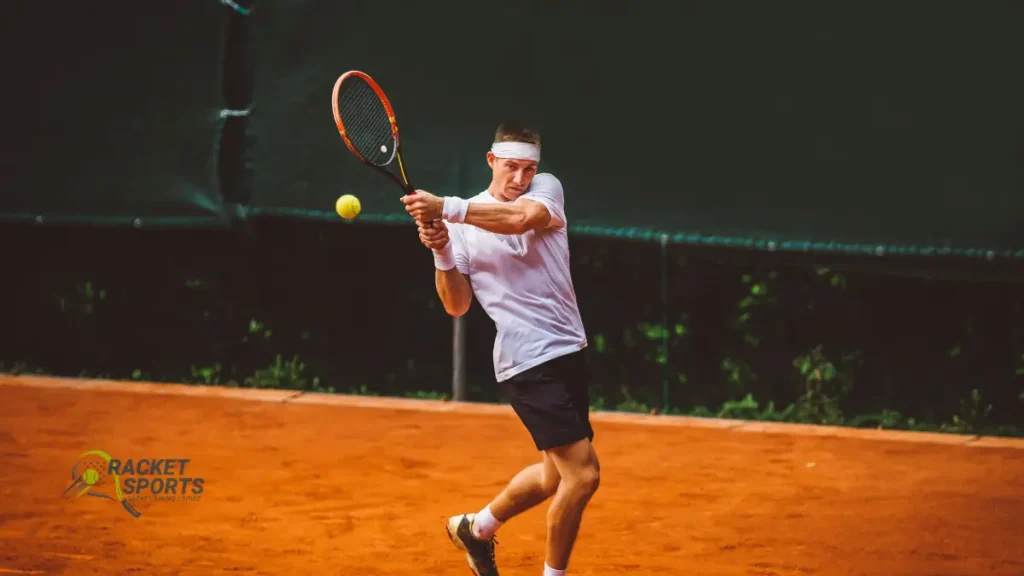
Tweener
A tweener is a shot hit between the legs, usually as a last-resort defensive play. Though rare, it is one of the most entertaining shots in tennis and has been used by professional players in highlight-reel moments.
Strategy for Tweener
A tweener is a flashy shot used in tight spots. Here’s how to improve it:
- Practice your timing: The tweener requires excellent timing to make contact with the ball. Work on hitting it in the sweet spot of your racket.
- Stay relaxed: Tension will reduce your ability to execute the shot. Keep your focus and remain fluid in your movements.
Recommended Tennis Rackets & Other Equipment for Specialty Shots
- Babolat Pure Aero Lite Tennis Racquet: Designed for spin-friendly play, this racket is suitable for players looking to execute specialty shots like topspin lobs and drop shots.
Equipment for Solo Practice
- Tennis Trainer Rebound Ball:
- For solo practice sessions, a rebound ball trainer is invaluable. The Teloon Solo Tennis Trainer includes a base and elastic cord, enabling continuous stroke practice without the need for a partner.
- Portable Tennis Ball Launcher:
- A portable Tennis ball launcher like the Slinger Slingshot T-One Launcher allows players to practice various shots independently. Its compact design and adjustable settings make it suitable for players aiming to enhance their skills without a coach.
Investing in these training aids can significantly improve your tennis performance, offering opportunities to refine techniques and build confidence on the court.
Conclusion
Mastering different tennis shots enhances your overall gameplay and makes you a formidable opponent. Whether you’re working on your groundstrokes, volleys, or specialty shots, consistent practice and strategic execution will take your game to the next level. Ready to refine your skills? Get the right tennis gear today and hit the court with confidence!
FAQS
What is the most common tennis shot?
Groundstrokes, particularly the topspin groundstroke, are the most common tennis shots. They are used throughout rallies and offer consistency and control.
What’s the difference between a forehand and a backhand volley?
A forehand volley is hit with your dominant hand, while a backhand volley is hit with your non-dominant hand. Both are essential for net play, but the technique differs slightly.
What is the best tennis shot for beginners?
Beginners should focus on mastering the topspin groundstroke and the serve. These shots provide a good foundation and can help you maintain rallies and control the game.
How can I improve my tennis serve?
To improve your serve, focus on developing a consistent toss, experimenting with spin (slice and kick), and practicing your footwork to generate power.
What equipment should I use to improve my shots?
High-quality tennis rackets, comfortable tennis shoes, and durable tennis balls can significantly enhance your performance.
